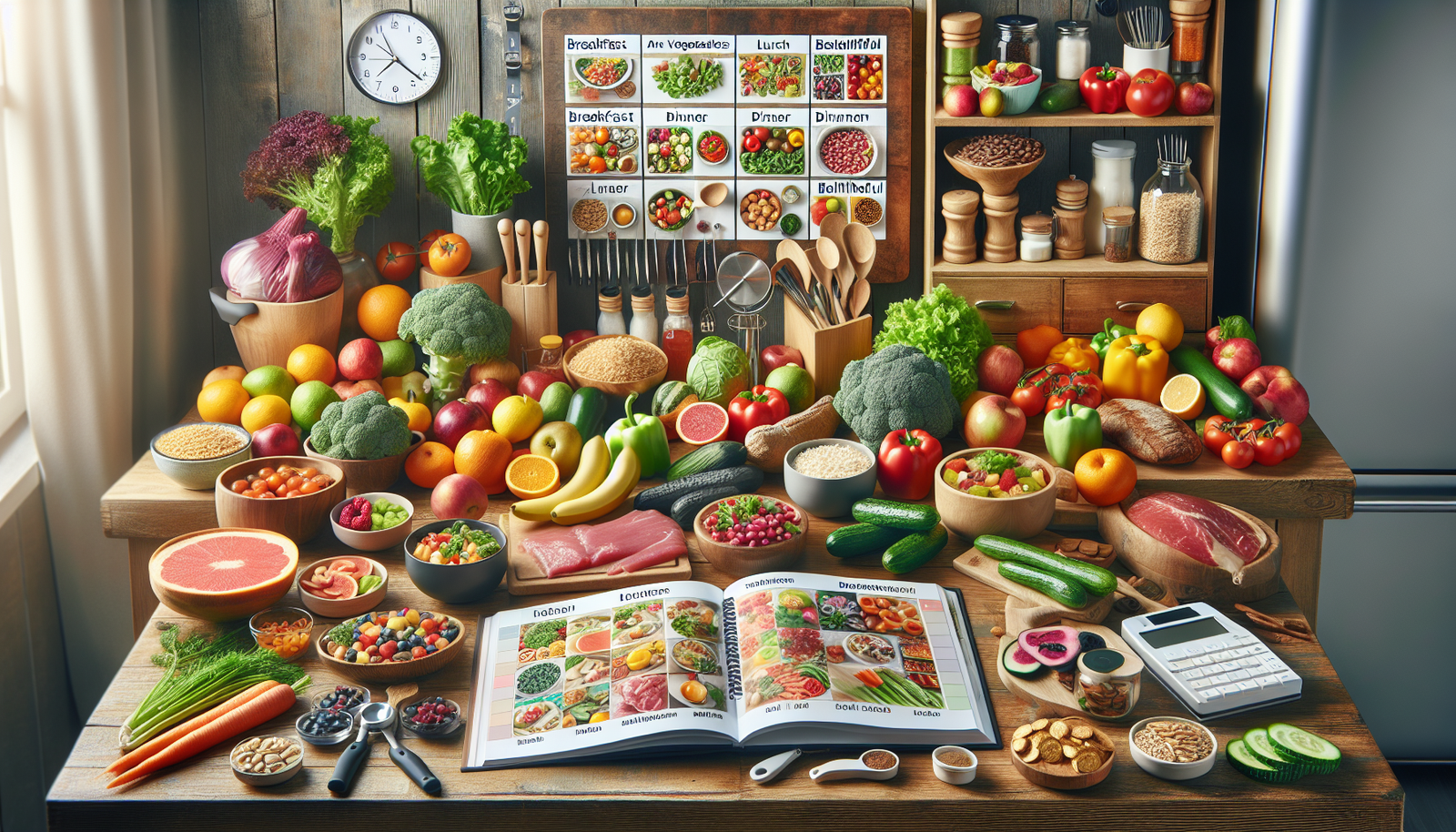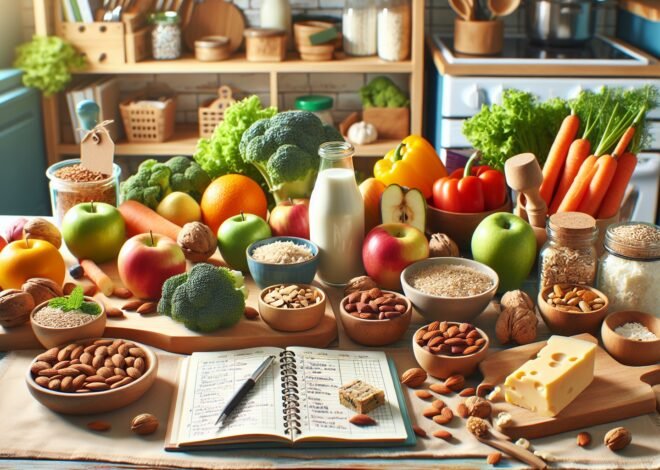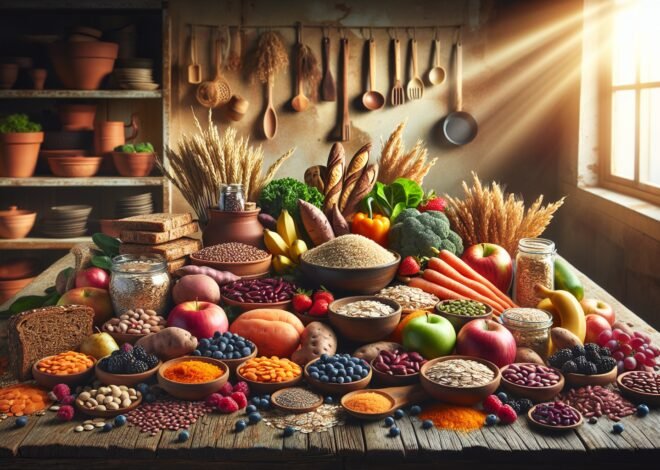
How to Plan Balanced Meals for Weight Loss
Balanced meals for weight loss are essential for achieving sustainable and effective results. Studies show that individuals who consume balanced meals are more likely to maintain weight loss over time. This post will guide you on how to plan meals that include the right proportions of proteins, carbohydrates, and fats. Discover practical tips on portion control, meal timing, and choosing nutrient-dense foods to help you feel full and satisfied. By focusing on balanced nutrition, you can enhance your weight loss journey while fostering a healthier relationship with food.
Importance of Balanced Meals for Weight Loss
Balanced meals are the cornerstone of effective weight management. They ensure your body gets the right nutrients to function optimally while supporting your weight loss journey. Let’s delve into the essential components of a balanced meal and how they facilitate sustainable weight loss.
Understanding Macronutrients: Protein, Carbs, and Fats
Macronutrients are the primary building blocks of nutrition, essential for energy production and overall health. Each plays a unique role in weight management:
- Protein: Critical for muscle repair and growth, protein helps increase satiety, reducing overall calorie intake. High-quality sources include lean meats, beans, and dairy.
- Carbs: Not all carbs are created equal. Complex carbohydrates, like whole grains and vegetables, provide sustained energy and are rich in fiber, aiding digestion and fullness.
- Fats: Healthy fats, such as those found in avocados and nuts, are crucial for hormone production and nutrient absorption. They also help keep you full longer.
Balancing these macronutrients can enhance your metabolic rate and promote a more efficient fat-burning process.
Role of Micronutrients in a Balanced Diet
Micronutrients, although needed in smaller quantities, are vital for healthy bodily functions. These vitamins and minerals support numerous processes that contribute to weight loss:
- Vitamins: Essential for energy metabolism, vitamins like B-complex can help convert food into energy, supporting active weight loss.
- Minerals: Elements like zinc and magnesium play a role in muscle function and recovery, critical for an active lifestyle.
- Antioxidants: Found in colorful fruits and vegetables, they combat oxidative stress, potentially reducing inflammation linked to weight gain.
Incorporating a variety of foods ensures an adequate intake of these nutrients, keeping your body in optimal health and supporting weight management.
How Balanced Meals Contribute to Sustainable Weight Loss
Sustainability is key in any weight loss journey. Balanced meals offer a strategy that’s not only effective but also maintainable in the long run. They provide:
- Consistency in Energy Levels: Prevents the highs and lows of blood sugar spikes, reducing cravings for unhealthy snacks.
- Flexibility: Allows for a broad range of foods, reducing the feeling of restriction that often leads to diet failure.
- Nutrient Sufficiency: Ensures your body has all it needs for daily activities and exercise, promoting better adherence to your weight loss plan.
By focusing on balance, you can enjoy satisfying meals while steadily achieving your weight management goals.
How to Design Balanced Meals for Weight Management
Designing a balanced meal plan tailored to your needs can profoundly impact your weight loss efforts. The right combination of portion control, timing, and nutrient-dense choices forms the foundation of effective weight management.
Building a Weight Loss Plate: Portion Control and Variety
Crafting the perfect weight loss plate begins with understanding portion control and incorporating a variety of foods:
- Portion Control: Use smaller plates to naturally reduce portion sizes. A well-balanced plate includes half vegetables, a quarter lean protein, and a quarter whole grains.
- Variety: Incorporate different colors and textures to ensure a range of nutrients. This not only supports health but also keeps meals interesting.
Regularly updating your meals with seasonal produce can enhance flavor and nutrition, making it easier to stick to your plan.
Meal Timing and Frequency for Optimal Metabolism
When you eat can be just as important as what you eat. Proper meal timing supports metabolism and weight management:
- Regular Intervals: Eating every 3-4 hours keeps your energy levels stable, preventing overeating at mealtime.
- Breakfast Importance: Starting the day with a nutritious breakfast kickstarts your metabolism and sets a positive tone for the day.
- Evening Meals: Keep these light and focus on easily digestible foods to avoid nighttime indigestion and support better sleep, which is crucial for weight loss.
Consistency in meal timing helps regulate appetite and supports a more active lifestyle.
Incorporating Whole Foods for Nutrient Density
Whole foods are minimally processed, retaining their nutritional integrity. They are pivotal for a nutrient-dense diet:
- Fresh Produce: Fruits and vegetables should be a staple, providing essential vitamins and fiber.
- Whole Grains: Options like quinoa and brown rice offer more nutrients and a satisfying alternative to refined grains.
- Lean Proteins: Sources such as fish, chicken, and legumes provide high-quality protein without added saturated fats.
Incorporating whole foods ensures a rich intake of essential nutrients, supporting your body’s needs during weight loss.
Tips and Tricks for Meal Planning and Preparation
Meal planning and preparation are your allies in maintaining a balanced diet amidst a busy lifestyle. With the right strategies, you can streamline your efforts and make healthy eating an effortless part of your routine.
Easy Recipes for Balanced Weight Loss Meals
Having a repertoire of easy, balanced recipes can transform your meal planning:
- Grilled Chicken Salad: Combine lean grilled chicken with mixed greens, cherry tomatoes, cucumbers, and a light vinaigrette.
- Quinoa Stir Fry: Sauté mixed vegetables with quinoa and tofu for a plant-based, protein-rich meal.
- Oven-Baked Salmon: Pair with roasted sweet potatoes and steamed broccoli for a nutrient-dense dinner.
These recipes are designed to be quick to make and packed with nutrients, making them perfect for a weight loss diet.
Grocery Shopping Strategies for a Balanced Diet
Strategic shopping is essential for maintaining a balanced diet:
- List Making: Prepare a shopping list based on your meal plan to avoid impulse buys.
- Perimeter Shopping: Focus on the outer aisles of the store where fresh produce, dairy, and meats are usually located.
- Label Reading: Check labels for added sugars, sodium, and unhealthy fats to make informed choices.
These strategies help you select healthier options and keep your kitchen stocked with the essentials for balanced meals.
Staying Consistent with Meal Planning for Long-Term Success
Consistency is key in achieving long-term weight management success:
- Weekly Planning: Dedicate time each week to plan meals and prep ingredients.
- Batch Cooking: Prepare large batches of meals to save time and reduce the temptation of unhealthy options.
- Adaptability: Stay flexible and adjust your plan based on your schedule and preferences.
By implementing these tips, you can maintain a balanced diet that supports your weight loss journey, making it a sustainable and enjoyable lifestyle change.
Conclusion
Balanced meals for weight loss focus on portion control and nutrient-dense foods. They include vegetables, lean proteins, whole grains, and healthy fats to ensure essential nutrient intake. Eating balanced meals helps stabilize blood sugar levels, reducing hunger and overeating. Regular meal timing and mindful eating can also support weight loss goals. Hydration and limiting processed foods play a crucial role in maintaining a healthy weight.
FAQ
What are the best balanced meals for weight loss that I can easily prepare at home?
Opt for meals that combine lean proteins, whole grains, and a variety of vegetables. Stir-fries with chicken or tofu, brown rice, and colorful veggies are great options. Salads topped with grilled fish, nuts, and a light vinaigrette are also quick and nutritious choices.
How can I create a weekly meal plan focused on balanced nutrition for weight loss?
Start by planning meals around whole foods like fruits, veggies, lean proteins, and whole grains. Allocate time each week to prepare these meals, ensuring adequate portion sizes. Rotate recipes to keep meals interesting and nutritious.
What are the top five balanced diet recipes for effective weight loss?
Try grilled salmon with quinoa, chicken and vegetable stir-fry, lentil soup, turkey and spinach wraps, and oatmeal with berries. Each dish offers a good balance of essential nutrients that support weight loss.
How do balanced meals contribute to sustainable weight loss and overall health?
Balanced meals provide necessary nutrients, keeping energy levels stable and reducing cravings. This leads to healthier eating habits, making it easier to maintain a healthy weight. They also support bodily functions, enhancing overall well-being.
Can balanced meals help with long-term weight management, and if so, how?
Yes, they stabilize blood sugar levels and control hunger, preventing overeating. Consistently choosing balanced meals fosters a sustainable lifestyle, making it easier to maintain weight over time.
What are common mistakes to avoid when preparing balanced weight loss meals?
Avoid relying on processed foods, skipping meals, or neglecting portion control. These habits can hinder weight loss efforts. Instead, focus on fresh ingredients and maintain a consistent eating schedule.











